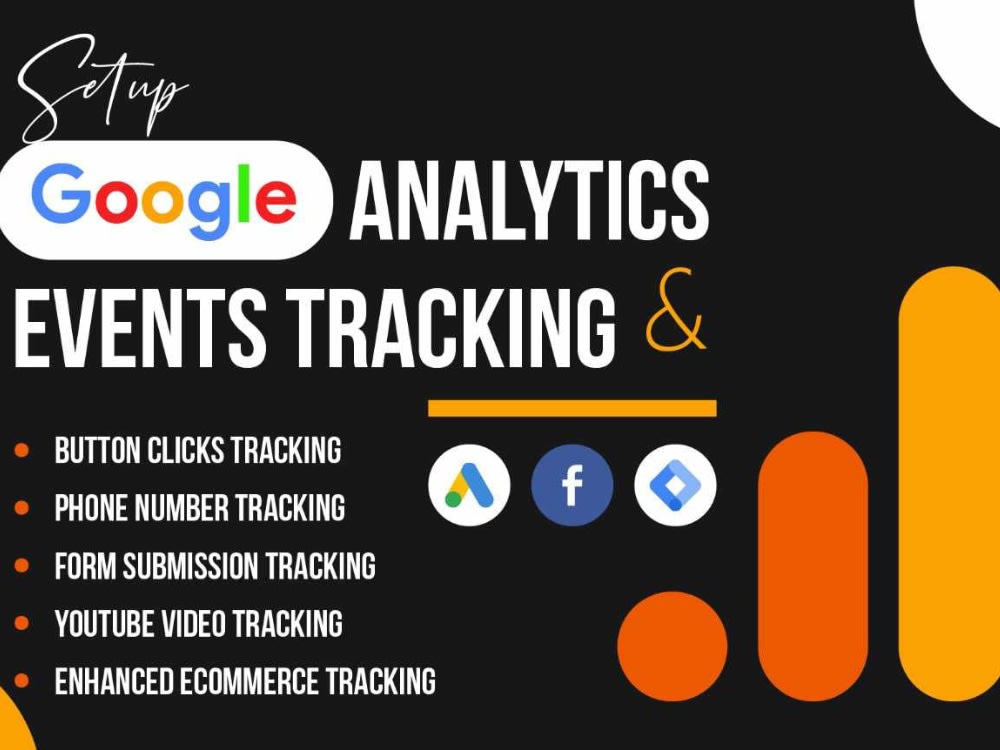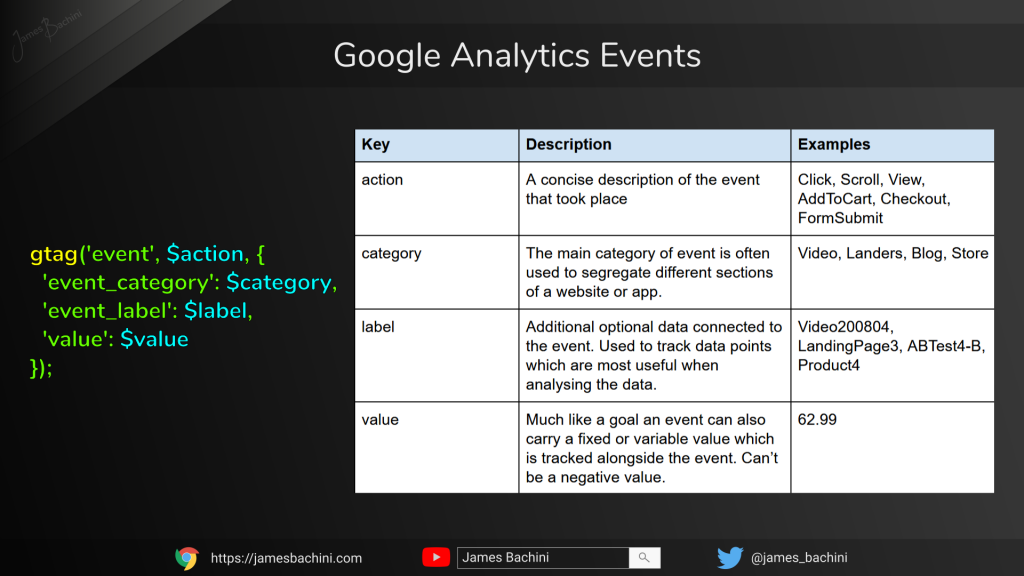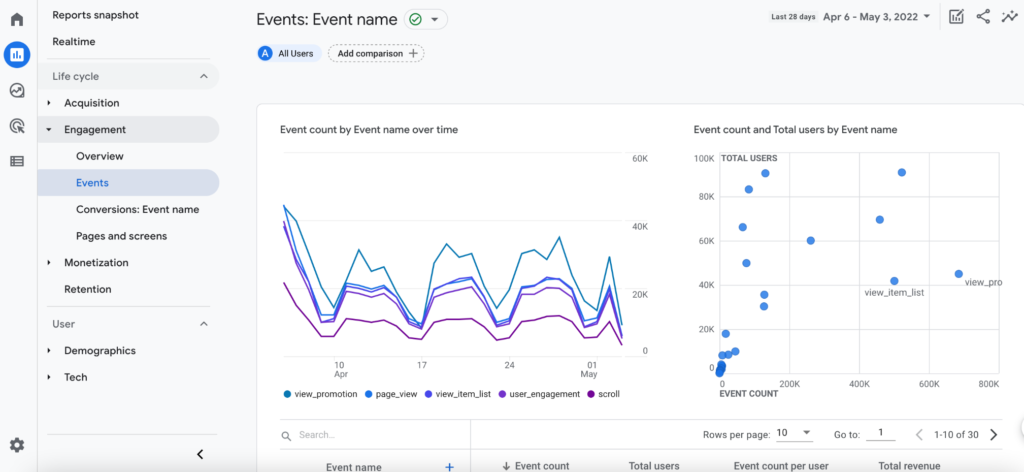The smart Trick of Google Analytics Event Tracking That Nobody is Discussing
Table of ContentsFacts About Google Analytics Event Tracking RevealedRumored Buzz on Google Analytics Event TrackingThe Main Principles Of Google Analytics Event Tracking Examine This Report about Google Analytics Event TrackingThe 8-Minute Rule for Google Analytics Event TrackingNot known Facts About Google Analytics Event Tracking

If you're going to set up occasion monitoring by hand, after that you're going to have to add some additional code to the components you wish to accumulate information from. The code you're going to collaborate with will look something such as this: There are four components within that code snippet that you're mosting likely to require to specify yourself: event, Category, occasion, Activity, event, Label and occasion, Worth.
As you can see, two of these are required (group and activity) while label and value are optional. Everything depends upon the sort of info you want relayed back to Google Analytics when a user clicks on the specified component (Google Analytics Event Tracking). It will be much easier to specify these elements if you analyse your website and choose which elements/actions you want to track
Indicators on Google Analytics Event Tracking You Need To Know
Now, you'll be asked to specify the and and you'll intend to choose from the drop-down food selection that appears when you click. This will bring up the very same event monitoring elements we looked at earlier, which you'll need to fill in. When you've specified these, you can move to the second box and choose the trigger that will certainly fire your tag.
On the following display, you'll also have a field for calling your trigger and, if you click package, you'll see a listing of the different triggers you can select. In this case, we intend to choose and after that select the alternative listed below. You'll establish the trigger to just fire when an element is clicked with a Link that has the.
Easy - Event tracking! Event tracking gives you a picture of how customers involve with your internet site and organization. Review on as we check out whatever you require to know, including what it is, why you should track events, exactly how to take care of occasions information, and various other appropriate Frequently asked questions you might have.
Google Analytics Event Tracking Fundamentals Explained
You can switch in between your event classifications, activities, and labels in the Top Occasions report. The Event Pages pop over to these guys report shows the web pages where events are triggered.
It shows you the course they take as they move from one occasion to the next and aids you to establish which content involves your target market one of the most. Events in Google Analytics have four primary components. They are also a part of the event monitoring code. Google Analytics uses these codes to track user interactions and team them into occasion records.
A checklist of the criteria you can track on your website is on the. After checking all necessary fields, you can click "X" to shut the home window and return to the Review food selection on the.
Getting The Google Analytics Event Tracking To Work

Choosing "False" will avoid that session from being a bounce. If you haven't done so, you might need to establish up a variable in the Google Analytics Setups box. Click "New Variable ..." if you can't find one to pick. After this, enter your GA monitoring ID in the Tracking ID area.
Your ID will certainly be on top of the display. To do this, comply with the following series of actions: After configuring the areas, select the "Triggering" section. When configuring your new trigger, click the "+" switch, then the "pencil" button, after that select your trigger type. Tag your trigger and specify the conditions that lead to cause shooting.
The Ultimate Guide To Google Analytics Event Tracking

When it comes to recognizing which areas and aspects are assisting customers through your click for more info conversion channel, you still will not know. So, without occasion monitoring, GA reports will just count sees as single-page sessions, even if users spend a whole lot of time on one page and involve with it dramatically (and a bounce).
Yet exactly how does event monitoring accomplish this?Single-page sessions referred to as bounces begin and conclude on the very same web page. Without occasion monitoring, GA will identify a customer's see as a bounce if they don't browse to one more web page, regardless of just how they connect with it. A video-rich web page can have a higher bounce price if events are not tracked.
A Biased View of Google Analytics Event Tracking
Nevertheless, for GA to take occasion hits right into account when measuring bounce prices, you need to pick "Non-interaction occasion" as "False" during the GTM configuration. Setting "event objectives" with occasion action is an outstanding means to keep an eye on individual tasks you value highly, such as brand-new lead entries or click a phone call to activity.